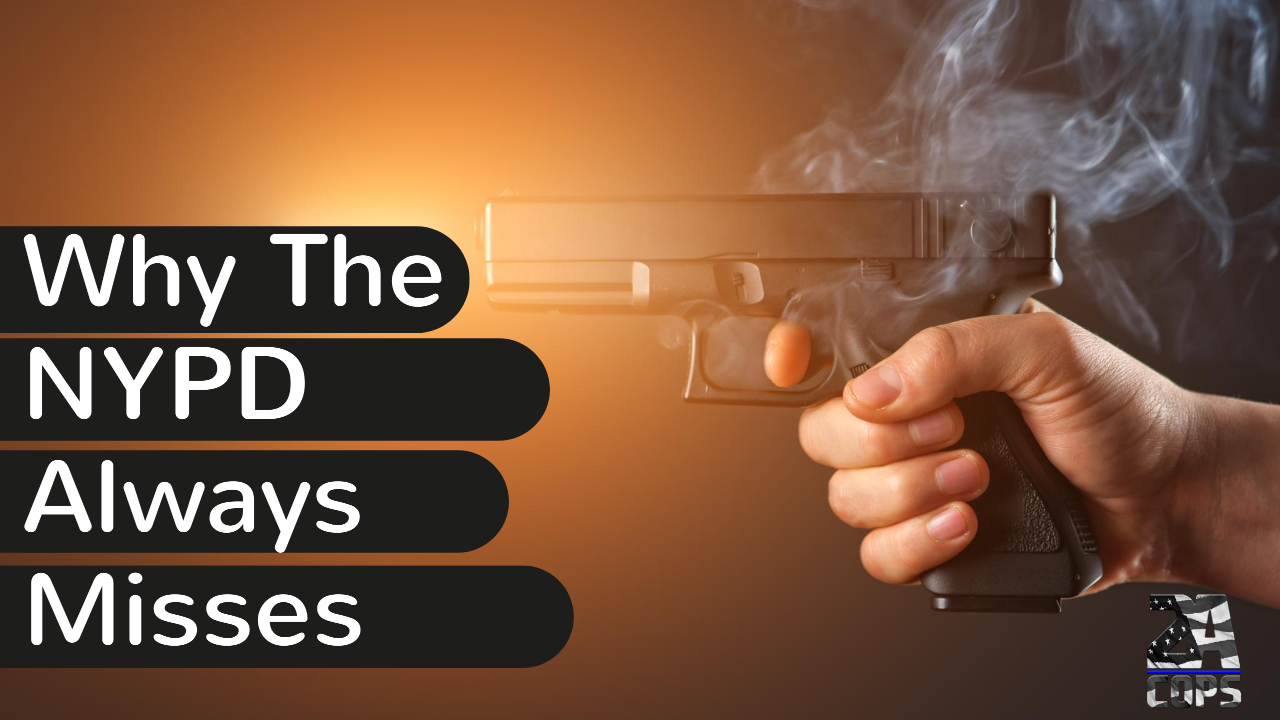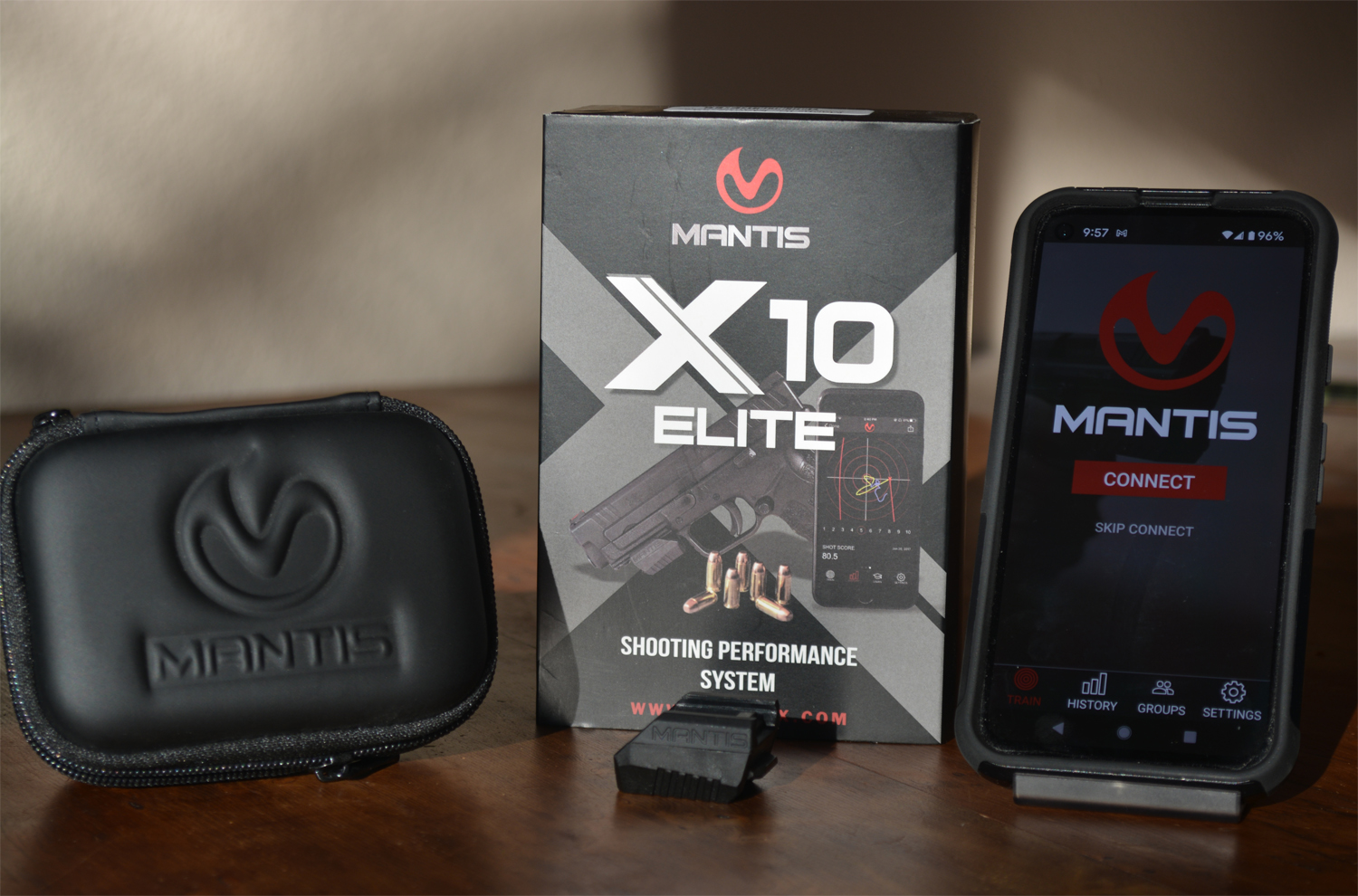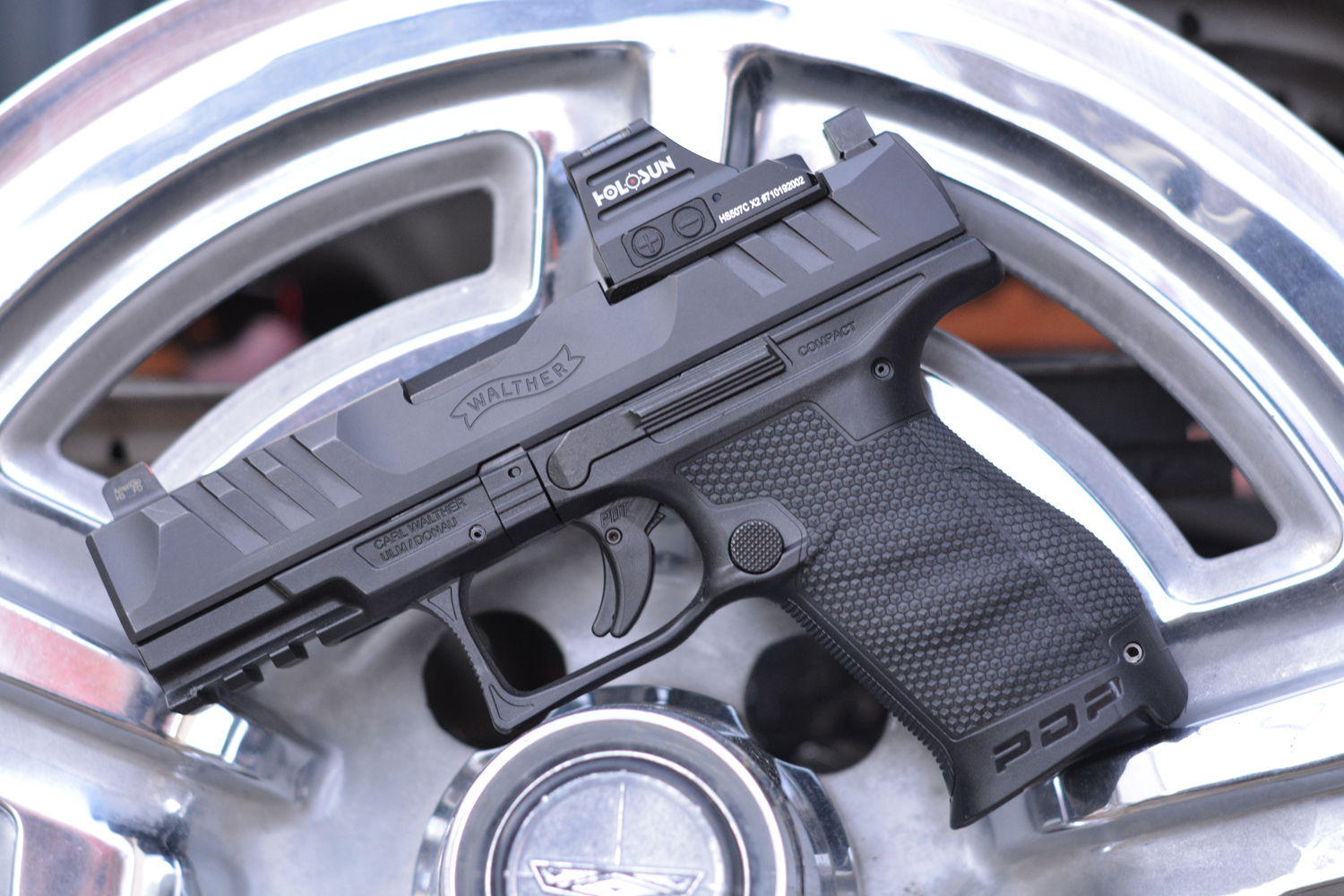“I’m new to shooting and thinking about buying a gun for self-defense or concealed carry. What is the best caliber for CCW?” This is an extremely common question, and the answers offered are almost as varied as the number of people supplying the answers. It is one of those topics that evokes some very heated conversations amongst shooters of all experience levels. Some of the opinions are based on modern, scientific studies, some are based on personal experiences, and sadly, some are based on nothing more than antiquated superstitions or stories.
One caveat I will throw out there at the onset is that what makes the best self-defense caliber for me may not work for everyone. For example, a tiny, lightweight, ultra-compact, concealed carry gun that fires a full-power, modern self-defense round is not an easy gun for a shooter with limited grip strength to shoot. In that case, stepping down a caliber makes sense. My wife is a perfect example of that, and despite the fact that my Glock 42 and 43 are nearly identical in size, she has difficultly managing the recoil of the 9mm G43, so instead she carries the G42 which fires the .380 ACP.
Now, with those initial remarks out of the way, it is my opinion that with the advent of modern ammunition, the best caliber for a concealed carry gun, or for a duty gun for that matter, is the 9mm Luger, also known as 9mm NATO or 9×19 in some circles.
I say this as a guy who carried a .45 ACP both on and off duty for more than half of my career. I did not carry it because that is what my department issued because in fact, they did not. I purchased my own gun and carried it on duty. I carried a .45 because I had heard so much bad information about the performance of 9mm ammo. Some of that information was just plain wrong, some was nearly 100 years old, some was based on old ammo designs, and some was in reference to ball ammo as compared to modern self-defense loads. I had based my decision on incomplete and/or bad information.
For those shaking their heads, please allow me to explain. This is best done by reposting a piece I wrote back in 2013 for The Bang Switch, shortly after I made the change to 9mm. For those who came here for an answer to the question that is the title of this piece, read on.
It is probably worth noting, since I originally wrote this piece, the FBI has switched from the .40SW back to 9mm. Additionally, I have been told by someone involved in the decision, the information that follows actually lead one particular California law enforcement agency to move from .40SW to 9mm.
Why 9mm?
Before we dive too deep into this, we must first look at the very basics of how handgun bullets stop (kill) attackers. They either immediately incapacitate the target with a CNS (central nervous system) shot or they stop the target by causing them to bleed out. Absent either of those, the attacker can still carry on their attack, even if they become slower or hindered by wounds.
Recently (2013), I attended an advanced handgun tactical training class, and at the beginning of the first day we watched a PowerPoint presentation. One of the topics of that presentation was ammunition selection. It was clearly stated at the onset of that topic, and anyone would be foolish to argue this point:
All other things being equal, the bigger the bullet the better
The problem with that caveat is that in life, all other things are never equal. No other “big boy” caliber handgun will carry as many rounds as a comparably sized 9mm and none of them are as easy to shoot as a 9mm.
To better understand why the .40SW became so popular, let us first look at why the 9mm fell out of favor.
One of the most noteworthy cases, and as far as the FBI is concerned, the precipitating event was the 1986 Miami-Dade Shootout between eight FBI agents and two well-armed bank robbers. Two of the FBI agents were armed with shotguns, three with 9mm S&W semi-autos and the rest had S&W .357 revolvers. Two of the FBI agents were killed and all but one of the survivors was injured. The FBI’s investigation of this incident placed partial blame on the stopping power of the 9mm handguns carried by only three of the eight agents. This prompted the FBI to look for a new cartridge, and a new standard gun as they also concluded that revolvers were no longer the best option for gun fighting.
In 1987, the FBI held a Wound Ballistics Seminar from which a report was generated, and released in 1989. The forward from that report is well worth reading.
Forward
The selection of effective handgun ammunition for law enforcement is a critical and complex issue. It is critical because of that which is at stake when an officer is required to use his handgun to protect his own life or that of another. It is complex because of the target, a human being, is amazingly endurable and capable of sustaining phenomenal punishment while persisting in a determined course of action. The issue is made even more complex by the dearth of credible research and the wealth of uninformed opinion regarding what is commonly referred to as “stopping power.”
1989 FBI Wound Ballistics Report
In reality, few people have conducted relevant research in this area, and fewer still have produced credible information that is useful for law enforcement agencies in making informed decisions.
This article brings together what is believed to be the most credible information regarding wound ballistics. It cuts through the haze and confusion, and provides common-sense, scientifically supportable, principles by which the effectiveness of law enforcement ammunition may be measured. It is written clearly and concisely. The content is credible and practical. The information contained in this article is not offered as the final word on wound ballistics. It is, however, an important contribution to what should be an ongoing discussion of this most important of issues.
John C. Hall
Unit Chief
Firearms Training Unit
The report listed 4 mechanics of projectile wounding: 1)Penetration, 2) Permanent Cavity, 3) Temporary Cavity and 4) Fragmentation. It goes on to explain that fragmentation cannot be counted on with handgun rounds by saying “Fragmentation, on the other hand, does not reliably occur in handgun wounds due to the relatively low velocities of handgun bullets.” Of the remaining three factors, they also discount the importance of the temporary cavity saying “temporary cavity is frequently, and grossly, overrated as a wounding factor when analyzing wounds. Nevertheless, historically it has been used in some cases as the primary means of assessing the wounding effectiveness of bullets.” That leaves us with two remaining causes for projectile wounding, penetration and permanent cavity.
Some other useful points that come from that report follow:
- Except for CNS (central nervous system) hits, instant incapacitation is not possible with a handgun bullet
- Even with the heart destroyed, voluntary actions by the subject shot are still possible for 10-15 seconds
- Organs are only damaged by a handgun with a direct hit
- Temporary cavity caused by a handgun bullet has no effect
- Kinetic energy deposit has no effect
The summary of that report does an excellent job putting it all in perspective.
Physiologically, no caliber or bullet is certain to incapacitate any individual unless the brain is hit. Psychologically, some individuals can be incapacitated by minor or small caliber wounds. Those individuals who are stimulated by fear, adrenaline, drugs, alcohol, and/or sheer will and survival determination may not be incapacitated even if mortally wounded.
1989 FBI Wound Ballistics Report
The will to survive and to fight despite horrific damage to the body is commonplace on the battlefield, and on the street. Barring a hit to the brain, the only way to force incapacitation is to cause sufficient blood loss that the subject can no longer function, and that takes time. Even if the heart is instantly destroyed, there is sufficient oxygen in the brain to support full and complete voluntary action for 10-15 seconds.
Kinetic energy does not wound. Temporary cavity does not wound. The much discussed “shock” of bullet impact is a fable and “knock down” power is a myth. The critical element is penetration. The bullet must pass through the large, blood bearing organs and be of sufficient diameter to promote rapid bleeding. Penetration less than 12 inches is too little, and, in the words of two of the participants in the 1987 Wound Ballistics Workshop, “too little penetration will get you killed.” Given desirable and reliable penetration, the only way to increase bullet effectiveness is to increase the severity of the wound by increasing the size of hole made by the bullet. Any bullet which will not penetrate through vital organs from less than optimal angles is not acceptable. Of those that will penetrate, the edge is always with the bigger bullet.
Now, let’s examine what they had to work with in 1987 when this report was generated. The 9mm ammunition of the day did only one of those two desired things (penetration and permanent wound cavity) well. They either penetrated very well, as in the case of 9mm ball ammo, or they had large, but short, permanent wound cavities. Most of the hollow point rounds from that era, like the Winchester Silvertip commonly used by law enforcement back then, rapidly expanded causing a large diameter cavity, but they stopped very rapidly and fell far short of what the FBI determined was to be the minimal effective penetration depth of 12 inches. Based on the poor performance of the 9mm ammo available, they looked to other calibers.
Initially, in 1988, the FBI adopted the 10mm, but the very sharp recoil of that cartridge lead them to develop a lighter load, referred to as the “10mm FBI” load. S&W took that lighter load and shrunk the case in length allowing it to fit in the same sized action as a 9mm, thus creating the .40SW which debuted in 1990.
In 1993, the FBI conducted a second Wound Ballistics Seminar which essentially validated everything they learned in the first one. They also noted that it is impossible to predict how a human will react to being shot, and that shot placement is critical and is dependent on good training. They stressed that the only thing an officer (shooter) can depend on to produce rapid, reliable incapacitation with a handgun is the infliction of trauma so severe as to totally disrupt the central nervous system. Finally, due to the nature of both the makeup of the human body and the effect that clothing and other barriers can have on the bullet as it impacts people in the real world, expansion should never be the basis for bullet selection, but should only be considered a bonus if and when it occurs.
In 1994, the Clinton gun ban went into effect. The firearms manufacturers had all seen it coming and that was when they began to really push the .40SW guns, especially on law enforcement. Not only did they want to get back as many of the pre-ban 9mm guns and magazines as they could to resell to the public, but now since they could no longer produce “high-capacity” magazines for the public, they pushed the new caliber guns since both guns would be limited to 10 rounds, and thus was born the era of the .40SW.

Fast-forward 20 years. Many of the reasons for moving away from the 9mm are no longer applicable. Modern bullet design not only achieves excellent penetration, but also allows for excellent expansion (when the stars align and it actually expands). Since as it is stated in the FBI reports, the kinetic force exerted upon impact is irrelevant (one argument for larger diameter and heavier bullets) and in the realm of handgun rounds, there really is no such thing as “knock down power” (another argument for larger diameter and heavier bullets), and even back in 1987, the temporary wound cavity was discounted as insignificant, some of the arguments for a larger caliber start to fall apart.
Let the Argument for 9mm Begin
When considering all of the information provided in that FBI report, combined with the advances in modern handgun ammunition, I began to look at caliber choice in a new way.
Argument 1
For argument sake, let us say we are in a gun fight and since we cannot count on expansion or CNS hits, we are left with exsanguination as the only reliable means of stopping our foe. Now let’s take the same handgun in either .40SW or 9mm. For this argument, I will assume we are using a Sig P226 since I am quite familiar with them. Now, in our gunfight, we fire every round in our gun, and by some miracle, all of our rounds strike our target in the torso. I ask you, which will cause our foe to bleed out faster, the 12 10mm holes (.40SW is the 10mm in diameter) or 15 9mm holes? My very basic math skills tell me that the .40SW gun has a total combined diameter of 120mm where the 9mm provides me with 135mm combined.
Argument 2
Given the same training and trigger time, the average shooter can put more rounds on target in a shorter period of time with a 9mm than with a .40SW. This comes down to pure physics. The .40SW is a harder kicking, sharper recoiling round than the 9mm. I would argue that even those who prefer .40SW, if firing the same platform in both calibers, they would be hard pressed to shoot their preferred .40SW as quickly and accurately as they could with a 9mm.
Argument 3
Given the same platform firearm (as in the case of the Sig P226), the same platform can hold more 9mm rounds than it can in .40SW. More bullets is always a good thing in a gun fight.
Argument 4
When comparing the duty ammo that my department carries (Federal HST 147 grain 9mm and 180 grain .40SW), the 9mm rounds actually outperform the .40SW rounds for penetration in ballistics gelatin. I actually witnessed this first hand last week in the advanced handgun class I attended. Considering one of the two primary wounding characteristics is penetration depth, this is another win for the 9mm.
Argument 5
The difference in diameter between the two rounds is only 1mm. Even if you assume absolutely zero expansion, that is an extremely minimal difference in size between two holes.
Summary
As we have said in the past, caliber choice like many things in the gun world is a personal decision. I honestly have no stake in what you carry or shoot. I am only offering this information as it is what finally caused me to switch from my venerable, loved .45ACP all the way down to 9mm. Consider this food for thought.
As always, your questions and comments are welcome. Be safe out there, and remember your ABC’s: Always Be Carrying.
-Matt
If you like the content you see here, visit our home page for more articles, and remember to sign up for our newsletter.





